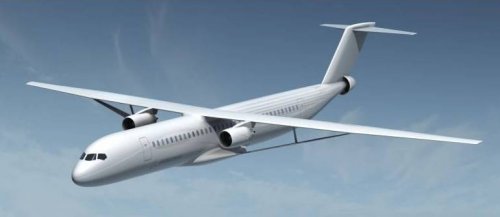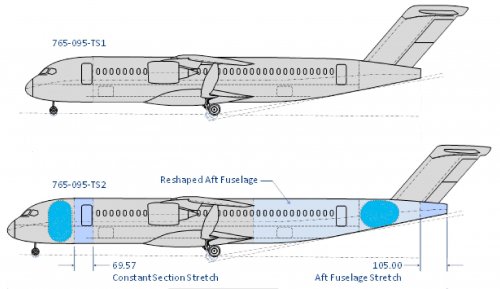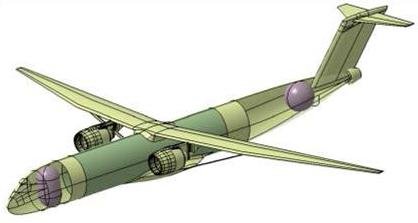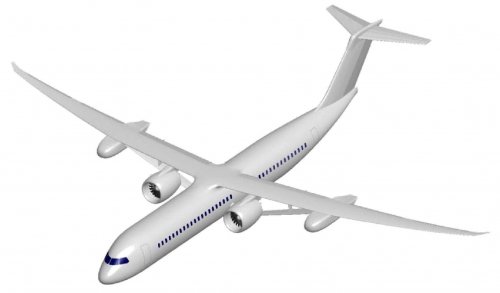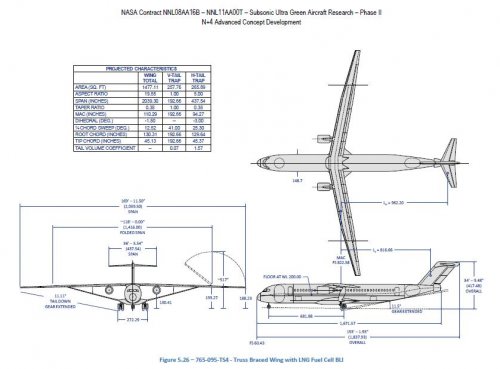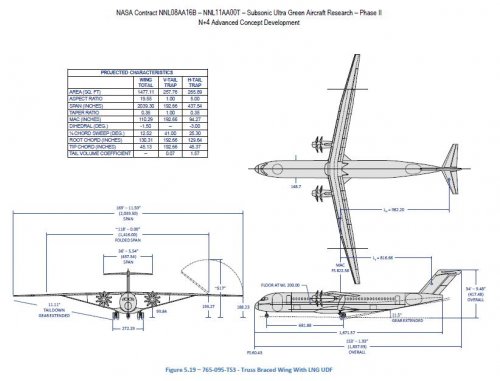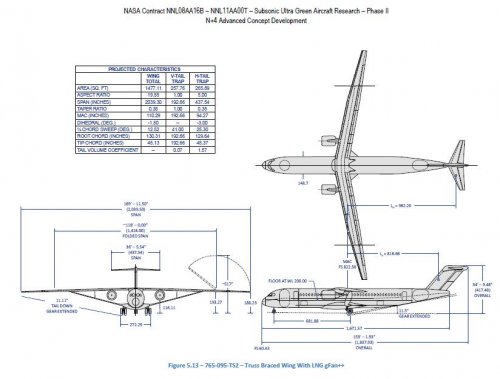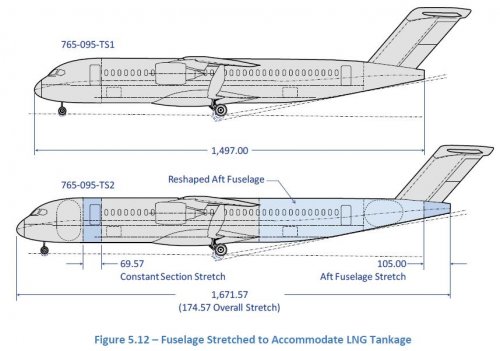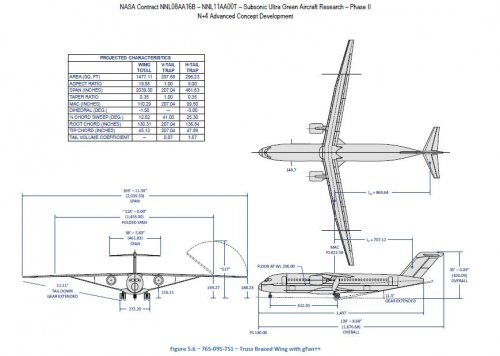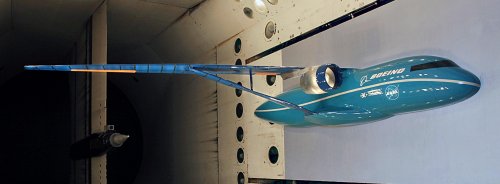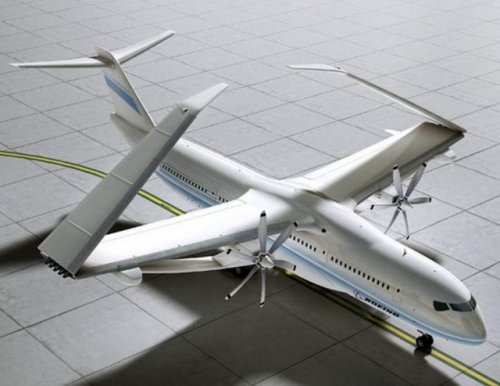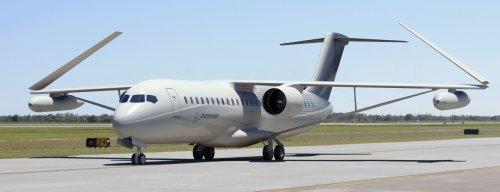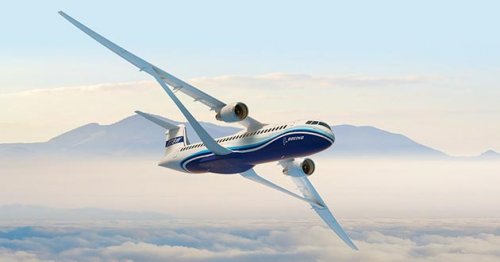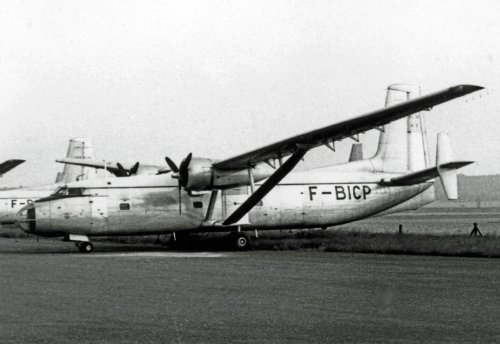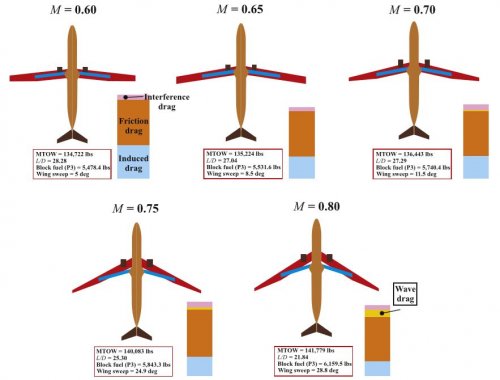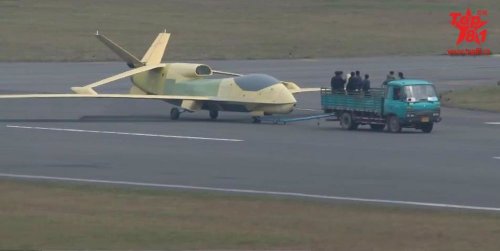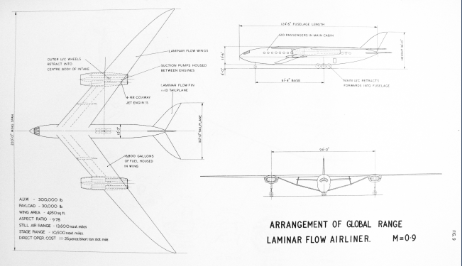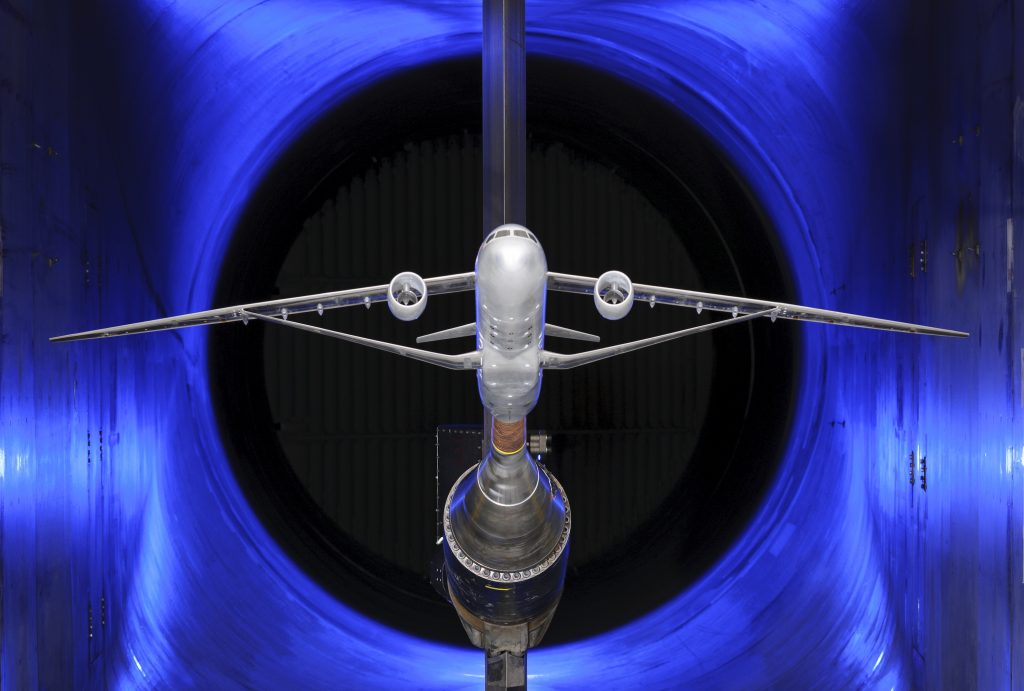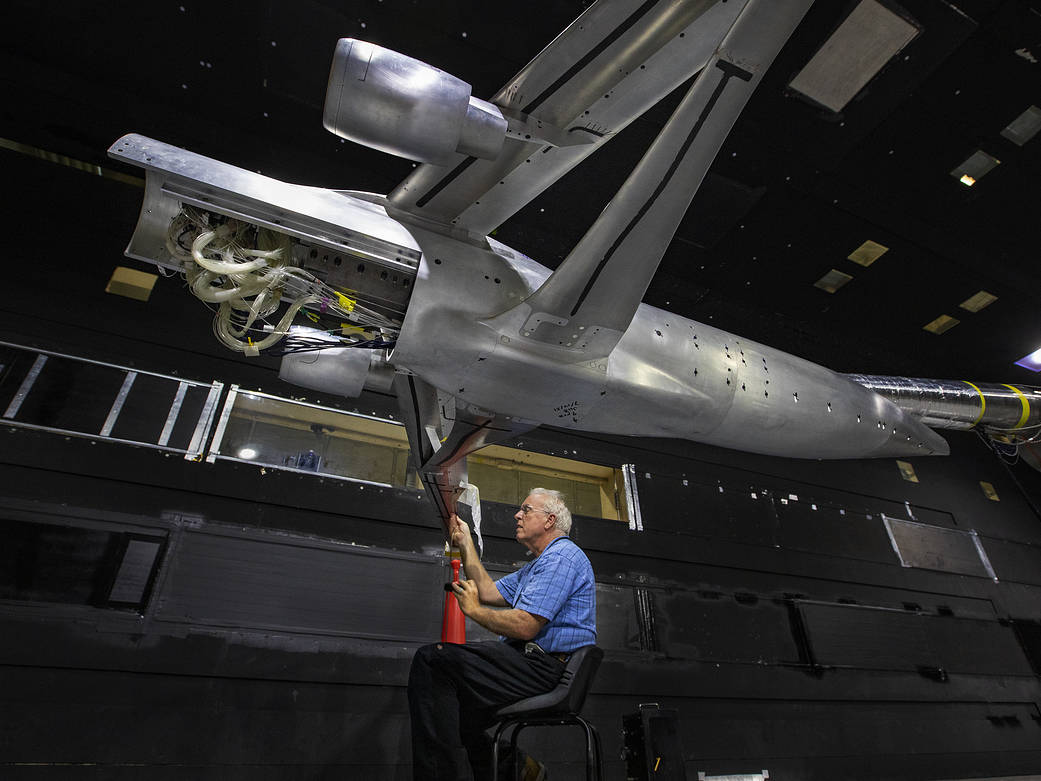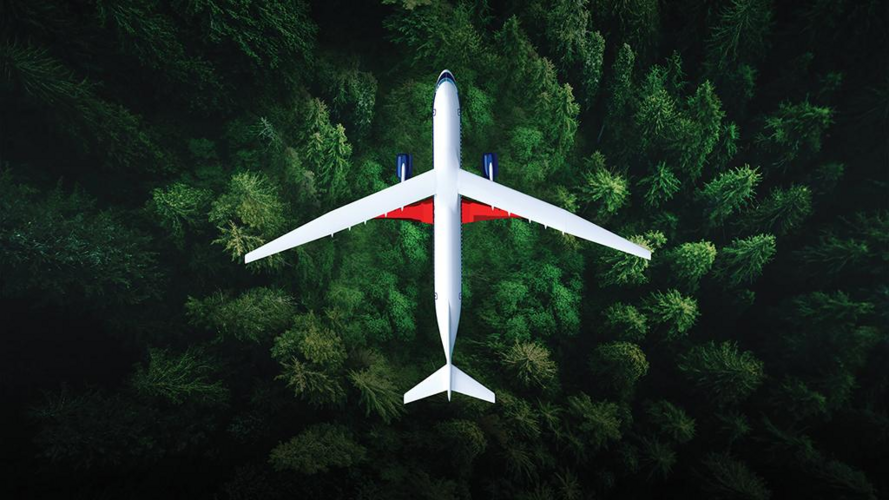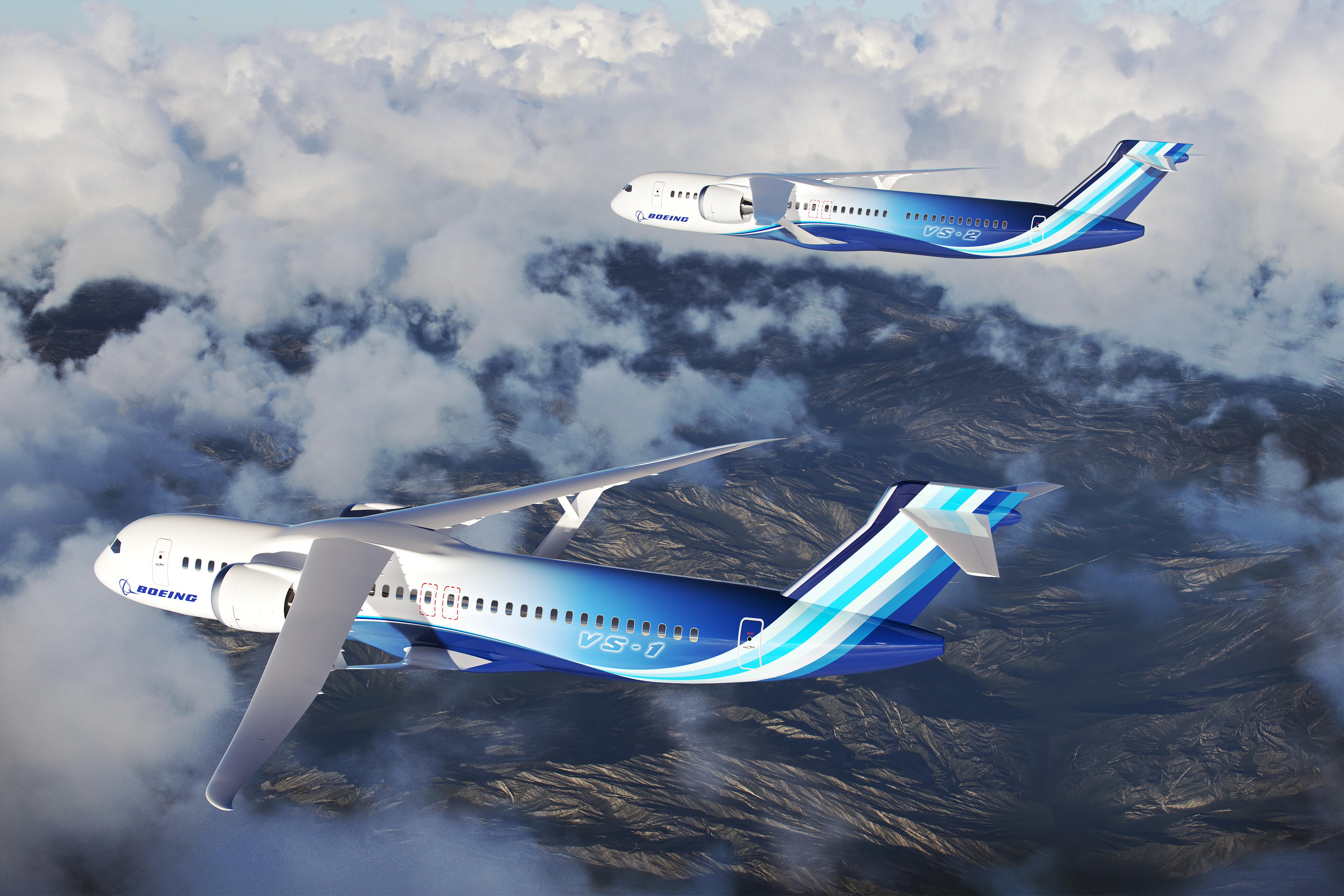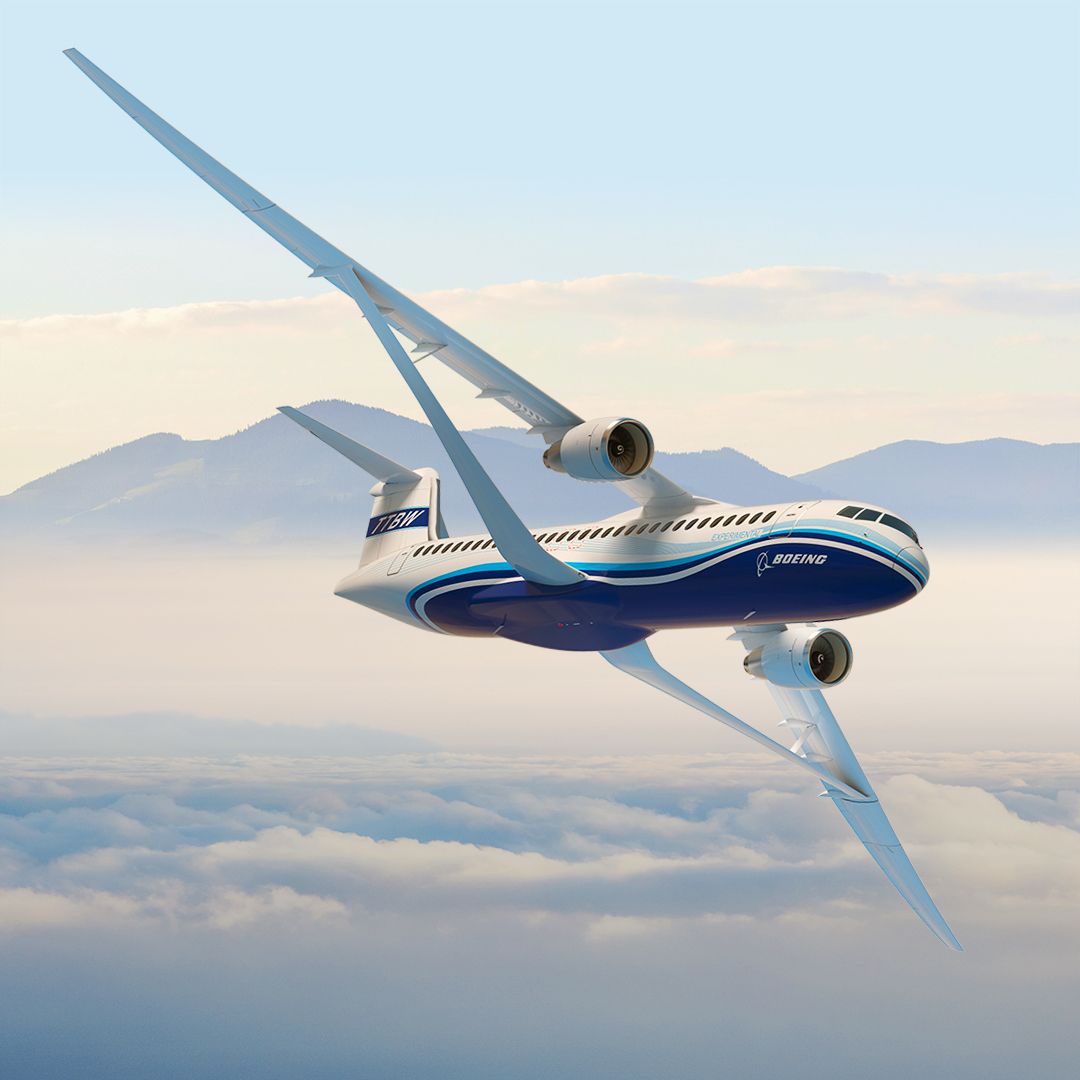LNG Propulsion - A Cool Idea?
Posted by Graham Warwick at 3/19/2012 5:17 PM CDT
Source:
http://www.aviationweek.com/aw/blogs/aviation_week/on_space_and_technology/index.jsp?plckController=Blog&plckBlogPage=BlogViewPost&newspaperUserId=a68cb417-3364-4fbf-a9dd-4feda680ec9c&plckPostId=Blog%3aa68cb417-3364-4fbf-a9dd-4feda680ec9cPost%3a00f49124-7f6b-4fec-9bdb-fae7095ba3b1&plckScript=blogScript&plckElementId=blogDest
What technologies could be available for an airliner entering service in 2045 that would not be ready in time for aircraft fielded in 2030? That's what NASA asked when it awarded Boeing a year-long extension to its concept studies for "N+3"-generation airliners flying around 2030-35.
What would another 15 years of technology development make possible? One answer: liquified natural gas (LNG) propulsion - in a hyper-efficient airliner already stacked with fuel-saving, emissions-minimizing advances.
In NASA's generational terms, N+3 is three generations on from today's 737 and 777. Boeing's "N+4" study, the final results of which were submitted at the end of February, looked another generation further into the future, targeting the 2040-50 timeframe.
When Boeing, Lockheed Martin and Northrop Grumman submitted their N+3 reports in 2010, NASA noticed they left a lot of interesting technologies on the shelf because they would not be mature enough for use in aircraft entering service around 2030-35.
So the N+4 study was intended to help NASA identify which of those immature ideas it should start looking at now, as it takes 20 years or more to get a technology ready for the big time in this industry.
blog post photo
The starting point was Boeing's 154-seat SUGAR* High N+3 concept (above, top), with its high aspect-ratio, low induced-drag, truss-braced wing. This was updated with 2045 engine technology, both ducted turbofan and open-rotor unducted fan, then Boeing added LNG fuel to produce the SUGAR Freeze.
The fuselage had to be stretched (above, bottom) to accommodate the fore and aft cyrogenic LNG tanks (Boeing Research & Technology principal investigator Marty Bradley admits the forward tank location is a "problem area" and needs more work).
NASA's goal for N+3 is to reduce fuel burn by 60% from today's CFM56-powered 737-800. Adding N+4 airframe and engine technology to the SUGAR High gets it to around -54%, moving to LNG fuel gets it to -57%, and switching to unducted fans takes it to -62%.
While LNG might not seem an obvious choice for a future aviation fuel, it offers lower fuel burn and emissions as well as potential cost and availability benefits, the study concludes. The US Energy Information Administration's latest annual outlook projects increasing natural gas production and continued low prices through to 2035.
Cryogenic LNG also would be an enabler for fuel-cell hybrid electric propulsion and a step towards clean liquid-hydrogen fuel, Bradley says. But there are environmental concerns with methane emissions from LNG production, as well safety and infrastructure issues to be overcome, and Boeing's study recommends further study.
blog post photo
Boeing also looked at the potential of adding solid-oxide fuel cells to power an aft thruster (above) that ingests the fuselage boundary layer and re-energizes the wake, reducing drag. Fed with hot engine-core air, the fuel cell would power a 3,000shp superconducting motor driving a 60in fan housed within a slender composite nacelle.
In the most technology-laden version of the SUGAR Freeze, the aft boundary-layer ingestion (BLI) device is coupled with unducted-fan (UDF) hybrid engines that are powered by LNG fuel and a 2,200shp electric motor driven from the solid-oxide fuel cell (SOFC).
Add all those acronyms together and you get: LNG + UDF + SOFC + BLI = a SUGAR Freeze with a 64% fuel-burn reduction relative to a 737-800, beating NASA's goal. You also get a bucketload of risk, which is why NASA would need to start working on these technologies sooner rather than later if this concept is ever to become a reality.
While the N+4 study is complete and the technology roadmaps delivered to NASA, Boeing is continuing work under an N+3 Phase 2 contract. This is focusing on further modeling and wind-tunnel investigation of the truss-braced wing and hybrid-electric propulsion of the SUGAR Volt N+3 concept - pictured above in its latest iteration with the batteries mounted in pods under the wing.
* SUGAR = Subsonic Ultra Green Aircraft Research
Posted by Graham Warwick at 3/19/2012 5:17 PM CDT
Source:
http://www.aviationweek.com/aw/blogs/aviation_week/on_space_and_technology/index.jsp?plckController=Blog&plckBlogPage=BlogViewPost&newspaperUserId=a68cb417-3364-4fbf-a9dd-4feda680ec9c&plckPostId=Blog%3aa68cb417-3364-4fbf-a9dd-4feda680ec9cPost%3a00f49124-7f6b-4fec-9bdb-fae7095ba3b1&plckScript=blogScript&plckElementId=blogDest
What technologies could be available for an airliner entering service in 2045 that would not be ready in time for aircraft fielded in 2030? That's what NASA asked when it awarded Boeing a year-long extension to its concept studies for "N+3"-generation airliners flying around 2030-35.
What would another 15 years of technology development make possible? One answer: liquified natural gas (LNG) propulsion - in a hyper-efficient airliner already stacked with fuel-saving, emissions-minimizing advances.
In NASA's generational terms, N+3 is three generations on from today's 737 and 777. Boeing's "N+4" study, the final results of which were submitted at the end of February, looked another generation further into the future, targeting the 2040-50 timeframe.
When Boeing, Lockheed Martin and Northrop Grumman submitted their N+3 reports in 2010, NASA noticed they left a lot of interesting technologies on the shelf because they would not be mature enough for use in aircraft entering service around 2030-35.
So the N+4 study was intended to help NASA identify which of those immature ideas it should start looking at now, as it takes 20 years or more to get a technology ready for the big time in this industry.
blog post photo
The starting point was Boeing's 154-seat SUGAR* High N+3 concept (above, top), with its high aspect-ratio, low induced-drag, truss-braced wing. This was updated with 2045 engine technology, both ducted turbofan and open-rotor unducted fan, then Boeing added LNG fuel to produce the SUGAR Freeze.
The fuselage had to be stretched (above, bottom) to accommodate the fore and aft cyrogenic LNG tanks (Boeing Research & Technology principal investigator Marty Bradley admits the forward tank location is a "problem area" and needs more work).
NASA's goal for N+3 is to reduce fuel burn by 60% from today's CFM56-powered 737-800. Adding N+4 airframe and engine technology to the SUGAR High gets it to around -54%, moving to LNG fuel gets it to -57%, and switching to unducted fans takes it to -62%.
While LNG might not seem an obvious choice for a future aviation fuel, it offers lower fuel burn and emissions as well as potential cost and availability benefits, the study concludes. The US Energy Information Administration's latest annual outlook projects increasing natural gas production and continued low prices through to 2035.
Cryogenic LNG also would be an enabler for fuel-cell hybrid electric propulsion and a step towards clean liquid-hydrogen fuel, Bradley says. But there are environmental concerns with methane emissions from LNG production, as well safety and infrastructure issues to be overcome, and Boeing's study recommends further study.
blog post photo
Boeing also looked at the potential of adding solid-oxide fuel cells to power an aft thruster (above) that ingests the fuselage boundary layer and re-energizes the wake, reducing drag. Fed with hot engine-core air, the fuel cell would power a 3,000shp superconducting motor driving a 60in fan housed within a slender composite nacelle.
In the most technology-laden version of the SUGAR Freeze, the aft boundary-layer ingestion (BLI) device is coupled with unducted-fan (UDF) hybrid engines that are powered by LNG fuel and a 2,200shp electric motor driven from the solid-oxide fuel cell (SOFC).
Add all those acronyms together and you get: LNG + UDF + SOFC + BLI = a SUGAR Freeze with a 64% fuel-burn reduction relative to a 737-800, beating NASA's goal. You also get a bucketload of risk, which is why NASA would need to start working on these technologies sooner rather than later if this concept is ever to become a reality.
While the N+4 study is complete and the technology roadmaps delivered to NASA, Boeing is continuing work under an N+3 Phase 2 contract. This is focusing on further modeling and wind-tunnel investigation of the truss-braced wing and hybrid-electric propulsion of the SUGAR Volt N+3 concept - pictured above in its latest iteration with the batteries mounted in pods under the wing.
* SUGAR = Subsonic Ultra Green Aircraft Research

